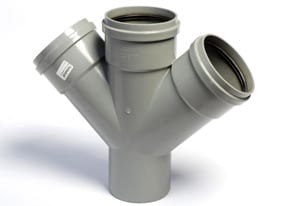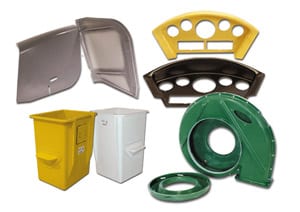The History of Thermosets
July 18, 2018
Vicki Corbett Celebrates 40 Years at Osborne
August 16, 2018
Creep resistant plastics are an important consideration in the design and application of any plastic molding. You want to choose a material that has all the best characteristics for your intended application!
What is “Creep”?
Creep is a term used in material sciences to explain the tendency of a solid material to deform permanently under the influence of constant stress, even if the stress is below the yield strength of the material. Creep ruptures in plastic parts occur because properties of molded plastics can gradually change over a period of time under such stress. In plastic, its properties can transition from ductile to brittle, unless the correct mixture of polymers and other additives are factored into the molding process. Knowing the intended application can reduce the occurrence of creep.
Although there are hundreds of materials available, three top creep resistant plastics are acrylic, PVC, and pDCPD. Each has advantages and disadvantages as listed below, and can be used a guide in selecting the right plastics for your application.
Acrylic
 Acrylic is a strong transparent plastic with a wide variety of applications. Introduced as an alternative to glass, it is a synthetic polymer called polymethyl methacrylate, or PMMA, that was originally marketed under the trademark, Plexiglass™.
Acrylic is a strong transparent plastic with a wide variety of applications. Introduced as an alternative to glass, it is a synthetic polymer called polymethyl methacrylate, or PMMA, that was originally marketed under the trademark, Plexiglass™.
Advantages of Acrylics
- Shatterproof – Acrylic’s shatter resistant properties and high impact resistance made it an ideal replacement for glass. Its tensile strength is greater than ten-thousand pounds per square inch, with up to 17 times greater strength than ordinary glass.
- Easily Fabricated and Shaped – Acrylic is easily fabricated and shaped. At 100 degrees it can be easily molded into any shape as needed and holds it form when cooled. Like wood and metals, it can be machined, drilled or sawed.
- Weather Resistant – Acrylic is weather resistant and can be used for all-weather applications.
- Lighter than Glass – Lightweight polymer means acrylic is 50 percent lighter than glass.
- Maintains Transparency – Acrylic is durable, holds its optical clarity with age, and does not fade or yellow like some plastics.
Disadvantages of Acrylics
- Acrylic scratches more easily than glass
- Compared to most other plastics, acrylics are not as strong
- Acrylics are easily stained by grease and oil
- Some distortion occurs when forming as acrylics bend easily during fabrication
- The front cost for installing acrylic is more than glass
- Acrylic will not shatter, but it is subject to cracking or will fracture into pieces under high impact or through high stress
PVC
 PVC, or polyvinyl chloride, is a thermoplastic made of 57% chlorine (derived from industrial grade salt) and 43% carbon (derived predominantly from oil / gas via ethylene). PVC’s intrinsic properties make it suitable for a wide variety of applications.
PVC, or polyvinyl chloride, is a thermoplastic made of 57% chlorine (derived from industrial grade salt) and 43% carbon (derived predominantly from oil / gas via ethylene). PVC’s intrinsic properties make it suitable for a wide variety of applications.
Advantages of PVC
- Corrosion resistant for most household sewerage pipes and other pipe applications.
- Cabling Applications – Good electrical and insulation properties over a wide temperature range.
- Inherent Fire Safety – Chlorine makes it fire retardant
- Excellent durability and long-life expectancy
- Easy processing characteristics to achieve desired specification for end-products
- Cost-effective
Disadvantages of PVC
- Temperature – Pipes are self-insulating and capable of handling high-temperature water but are subject to melting at temperatures of only a few hundred degrees.
- Size – Pipes are only available in limited sizes. Pipe joints can be very bulky and restrictive in tight places.
- Weight – Its lightweight makes it prone to cracking when dropped, stepped on, or if exposed to harsh temperature.
- Environmental Effects – Pipes contain trace chemical compounds harmful to the environment. Solvents used to join PVC pipes and fittings together contain VOCs (volatile organic compounds).
pDCPD
 pDCPD is an abbreviation for polydicyclopentadiene, a thermoset polymer plastic material with excellent creep resistance. Thermoset plastics contain polymers that cross-link together during the curing process to form an irreversible chemical bond. Once molded and cured, thermoset plastics always remain in a permanent solid state. It is structurally strong and more resistant to extreme temperatures and corrosion and can withstand high impacts.
pDCPD is an abbreviation for polydicyclopentadiene, a thermoset polymer plastic material with excellent creep resistance. Thermoset plastics contain polymers that cross-link together during the curing process to form an irreversible chemical bond. Once molded and cured, thermoset plastics always remain in a permanent solid state. It is structurally strong and more resistant to extreme temperatures and corrosion and can withstand high impacts.
Advantages of pDCPD
- High tensile strength
- Moderate flexural properties
- High impact strength
- High heat distortion temperature
- Excellent corrosion resistance
Disadvantages of pDCPD
- Can’t be remolded or reshaped
- Non-recyclable, yet low environmental impact



